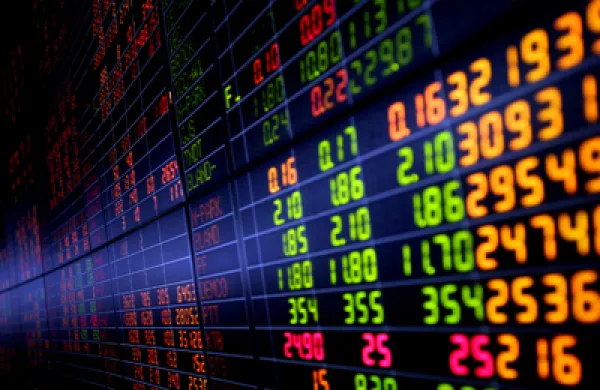A startup trading venue — Stamford, Connecticut–based AX Trading — is trying to revive the block trade, targeting institutional traders on the hunt for block liquidity in small- and mid-cap stocks.
Its challenge is to win market share despite the prevailing trend — markets awash in high frequency trading and a growing army of young traders accustomed to working with speedy algorithms and small trade sizes. AX Trading says the answer is a return to a trading model from the past — the call auction — transposed to an online, alternative trading system format.
At least one major exchange thinks it can work. This week it was reported that Nasdaq OMX had preliminary discussions with AX Trading about a potential joint venture or acquisition, to help the exchange operator diversify its offerings. Neither party would comment on the negotiations.
AX Trading was founded in November 2011 by Kevin Callahan, a former McKinsey & Co. consultant and managing director at Jones Trading; Peter Jenkins, a former head of the New York Stock Exchange’s institutional client relations group; Mohan Thurairajah, former global head of connectivity at TradingScreen and a member of the early development team at the Intercontinental Exchange (ICE); and James Ross, a veteran of electronic and alternative trading systems at Instinet and the NYSE.
After reading a book on the history of the call auction market and its coffee house origins, Callahan realized that the call auction — a market where all buy and sell orders are matched together at an appointed time and at a single clearing price, the way traders operated 200 years ago — was the underlying structure of the phone-based, block trading business. This is a contrast to the continuous, high speed markets one associates with traditional exchanges and different from dark pools that do not run auctions but rather simply aim to find matches at the midpoint.
He also realized that this older trading model could be transposed to an electronic format to make the block trading business for institutional traders far more efficient.
“High speed trading is great but it’s not the only way to trade,” Callahan says. “At times there can be value captured by slowing things down and letting the liquidity come to you rather than constantly chasing liquidity.”
The way that the AX Trading Network works is that an online call auction is initiated — not by the exchange — but by a trader. This happens when a limit order is submitted, causing messages to be sent to the 250 firms and 1,200 traders that have joined the network. The message advises that a call auction in a specific small or mid-sized stock is about to begin and that traders have five minutes — an eternity in today’s microsecond environment — to enter a limit order to participate in trading for that particular stock.
What’s key here, and in contrast to call auctions that the exchanges have offered in the past, is that the initiator of the auction — the trader — is able to control and filter who is invited and the information that is sent. For example, a trader may send invitations to all the members of the AX network or just to those members that invest in health care stocks, or only to those that have holdings in a particular stock. If they choose, traders can share information about whether they are buying or selling, and at a particular price, or run a blind auction.
After five minutes, the orders are electronically reviewed and if the two sides of a trade are represented, the trade is completed at a single clearing price that maximizes the number of shares traded or the largest block.
The advantage of this format — and what differentiates AX from other dark pools — including those that try to facilitate block trades, Callahan explains, is that “we run a true auction that discovers the price of the trade that may be inside or outside the spread.” Indeed, AX has seen one third of its trades occur outside the spread, allowing the institutional community to buy or sell blocks at a price at which they want to trade, whether it’s at a discount or a premium. This is unlike most dark pool trades, whih are priced at the midpoint of the national best bid and offer. Of course, if the two sides of a trade are not represented on the AX network, all orders are canceled.
Callahan makes the point that AX, by design, is not truly a dark pool and that calling it a dark pool is a misnomer. A better description, he says, is an online call auction for small- and mid-cap stocks.
“By design, AX is not a dark pool because we are actually proactively sending out messages to wake people up for the auction,” he says. This allows institutional traders to react to the liquidity opportunity and participate. “What they are responding to is the access to liquidity in a small- or mid-cap stock that is not in the market or an OMS order blotter,” he explains. “It’s sitting in a portfolio, and an AX call auction is helping to pull that latent liquidity out.”
In addition, every firm and trader has a profile on the system and can control the content and distribution of that information. “It’s like a social network profile,” Callahan says, whereas in dark pools there is total anonymity.
As of January, AX reports that among the 3,183 unique auctions that have been conducted on its site, 133 have been successfully completed. In addition, the average market capitalization of stocks on the site is $1.8 billion, while the average order size is approximately 85,000 shares and average trade size is approximately 48,000 shares. The average daily volume on an initiated order is 800,000 shares a day.
For some, like Matthew Samelson, a principal with Stamford, Connecticut-based capital markets consultancy Woodbine Associates, AX’s network offers “a new and creative approach” to a longstanding and persistent problem in the trading markets — how to tease out and attract latent liquidity sitting in a portfolio when you want to make a large block trade. In his view, “it’s sort of an evolution of the call market model,” and could attract a dedicated following over time.
Andrew Brooks, head of U.S. Equity Trading at Baltimore, Maryland–based T. Rowe Price Associates, says that at a time when the current market structure is “convoluted” and “way too complicated,” he is not surprised to see some revisiting of old but good market structure ideas. “Call auctions can be an arrow in your quiver to try and find block trading opportunities,” Brooks says, though in the future he would like to see an even broader range of market experimentation in the form of pilot programs.
Others, however, see a tough road ahead for new entrants such as AX. Justin Schack, a partner at Rosenblatt Securities and author of a monthly analysis of the ATS/dark pool sector, says in his end-of-the-year report that “new venue formation has peaked,” and “the secular growth trend [for dark pools] has ended,” following a 33.98 percent drop in total equity-market volume over the past three years, from a peak of 9.77 billion shares per day in 2009 to 6.45 billion in 2012.
Schack tells Institutional Investor that the portion of the market that AX is targeting — the block trade — has been shrinking. “With each successive generation of new traders who have cut their teeth on algo trading, we see less of an appetite for block trading,” Schack says. He notes that the closest competitors to AX’s block trading effort include ITG Posit, Liquidnet and Pulse Block Cross. As of February 28, the New York Block Exchange, a non-displayed, block trading venture run by the NYSE and BIDS Trading, will cease trading.
Rosenblatt’s report also highlights the ability of dark pools managed by more established firms such as Barclays, Deutsche Bank and UBS to improve operations and raise volume activity in the past year, thus raising the bar for startups such as AX. In short, “new ATSs are not being launched with the level of success seen before the 2009 peak,” Schack tells II.
Robert Schwartz, professor of finance at Baruch College and author of “The Electronic Call Auction” — the book that inspired Callahan — notes that earlier efforts to introduce call auction markets were either overly complicated or were limited to only after-hours trading. He views AX Trading as offering an easy-to-use format during normal trading hours and thus should have better luck at expanding its user base. But, he adds, “to build a new trading market from scratch and make it work is always a challenge.”
For now, Callahan and his team are pushing forward. In January their firm launched a new service to expand its user base. DirectAX allows investment banks, working with sellers of large blocks of shares — in the corporate community or at private equity and venture capital firms — to utilize the AX auction platform to sell blocks directly to institutional investors. Activity on AX has also been advanced by the firm’s partnership with Credit Suisse’s Advanced Execution Services group, providing easier access for a wider audience of traders.
Callahan says the key goal of AX Trading is empowering the trader to trade with the counterparties they want to trade with. He adds: “When you run into a liquidity speed bump, we can help.”






